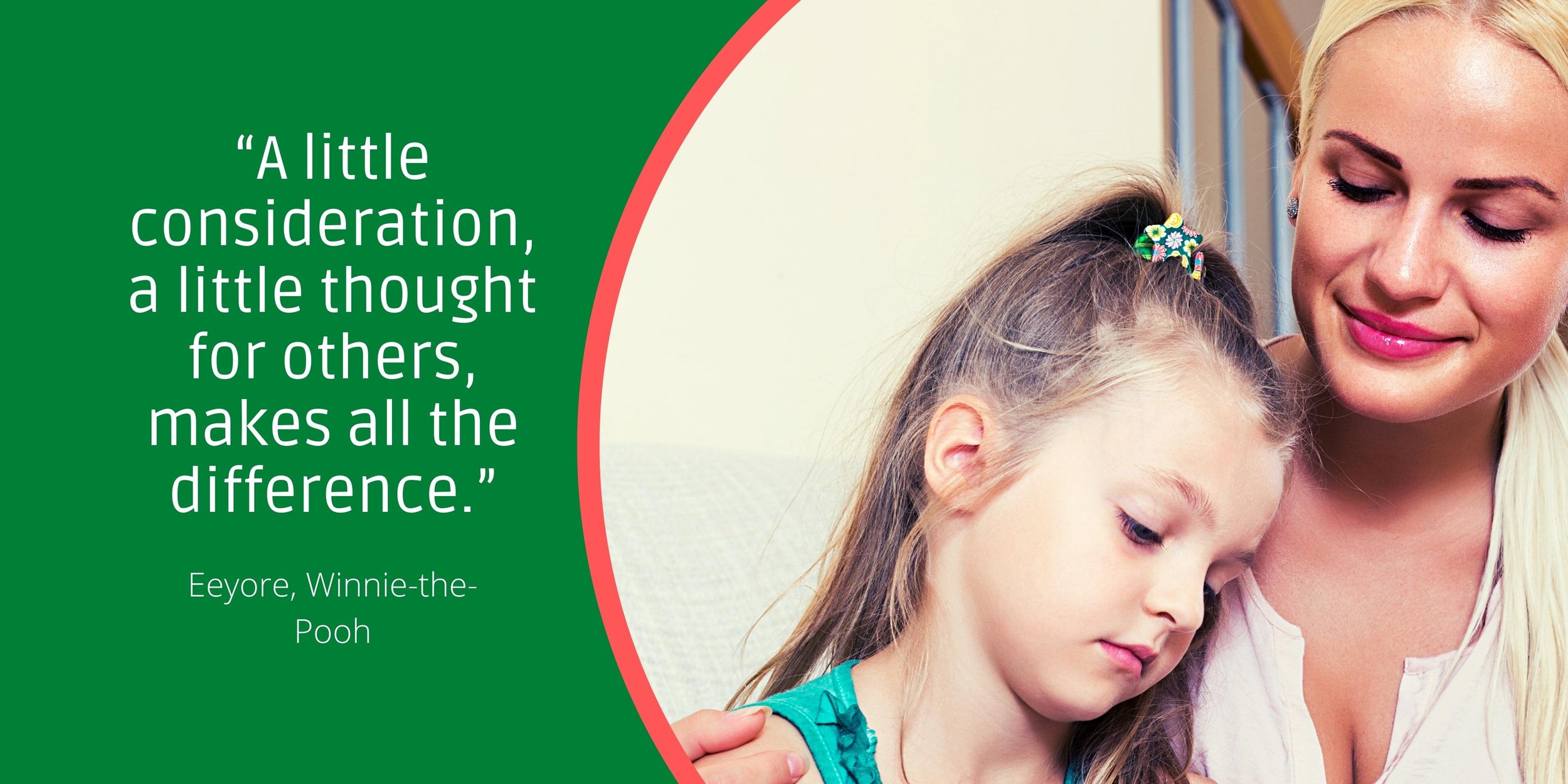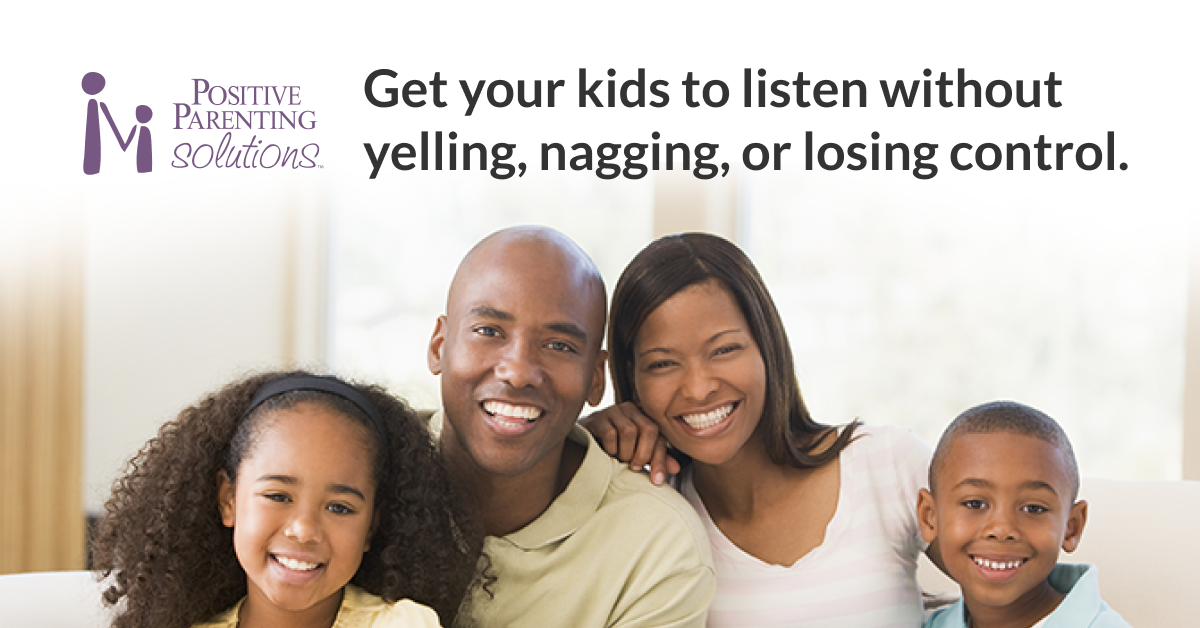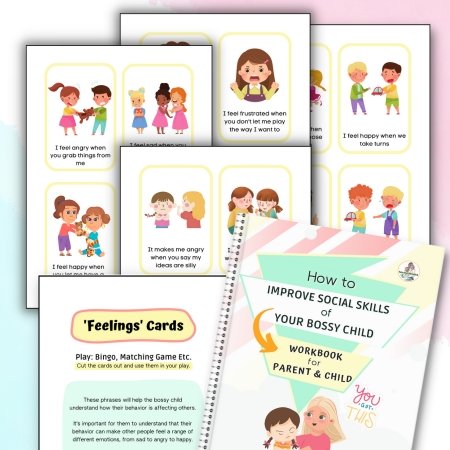How To Calm Kids Down From Strong Emotions
How to calm kids down from strong emotions is a question that all parents face at some point.
It can be difficult to deal with an emotional child, especially when you don't know how to calm them down.
In this blog post, we will describe what strong emotions are and give you a few positive parenting techniques that might help calm your child down.
We will also provide a list of activities that can help calm kids down and a list of natural remedies that can be used when needed.
What are Strong Emotions and Why Do They Occur?
Strong emotions are normal reactions to big life events or changes.
They can be caused by happy or sad events, such as starting school, moving house or the death of a pet.
Children often feel intense emotions because they don't have the same coping mechanisms as adults do.
As a result, they may express their feelings in ways that seem out of proportion to the event.
Why Is It Important for Kids to Learn to Calm Down?
It's important to teach kids how to calm down for several reasons.
It can prevent meltdowns and tantrums.
If kids know how to calm themselves down, they're less likely to have a meltdown or throw a tantrum when they're feeling overwhelmed.
It can help children regulate their emotions.
When kids can identify their feelings and take steps to calm down, they are less likely to feel overwhelmed by their big emotions.
It can help children focus and concentrate.
When kids are calm, they're able to think more clearly and pay attention more easily
It can help them to build self-control.
When kids know how to stay calm, they're less likely to give in to impulses and act on impulses
It can help them build self-esteem and confidence.
When kids can control their big feelings, it shows that they're capable and in control. This can boost their self-esteem and confidence.
Here is an article- How To Help Your Child Build Better Self Esteem-7 Best Preschool Activities
It can help them to be better prepared for stressful situations.
When kids know how to manage their stress levels, they're better equipped to handle challenging situations when they arise.
Here is another helpful article that teaches children to cope in challenging situations- 17 Tips on How to Help Your Child Become More Resilient
All of these benefits make it clear that kids need to learn how to calm down.
So how can you help your kids learn how to calm down?
How to Help Your Child Calm Down from Strong Emotions?
Here are a few calming strategies for teaching kids to calm their strong emotions.
Validate their Feelings:
Let them know that it's normal to feel the way they're feeling and that you understand.
This will help kids feel heard and understood.
For example, you could say "I can see that you're feeling angry right now. It's OK to feel angry, and I'm here to help you calm down."
Encourage Them to Use Words:
Help your child label their feelings by saying the feeling out loud.
This will help them understand and process their emotions.
For example, you could say "You sound really sad. Can you tell me what's going on?"
Here is a helpful article- How to Teach Kids About Feelings and Emotions
Use a Calm Voice:
Your tone of voice can influence your child's emotions.
So, when you're talking to your child, make sure to use a calm and soothing voice.
For example, you could say "You sound scared. Let's take a deep breath together and see if that helps."
Talk About What's Happening in Their Body:
Help your child to become aware of what's happening in their body when they're feeling negative emotions.
For example, you could say, "I can see your heart is racing and your face is getting red. That means you're feeling really upset right now."
Offer a Calm and Reassuring Presence:
Sometimes, all your child needs is for you to be there with them.
Offer a calm and reassuring presence by sitting with them, holding them, or simply being nearby.
Model Calm Behavior:
Your child will learn by watching you, so it's important to model calm behavior.
If you're feeling calm and collected, your child is more likely to feel the same way.
So, take a deep breath yourself and show your child how to regulate their emotions.
Give Them Choices:
When kids feel like they have some control, it can help to calm them down.
Give them choices and let them know that they're in charge of their own emotions.
For example, you could say "It sounds like you're feeling really angry right now. Would you like to take some deep breaths or go for a walk and get some fresh air?"
Give Them Some Time and Space:
Sometimes, kids just need a little time and space to calm down.
If your child is feeling overwhelmed, offer to step out of the room for a few minutes or let them have some alone time in their bedroom to self-soothe.
Focus On the Present:
When kids are feeling overwhelmed by their emotions, they may start to worry about the future or dwell on the past.
This can make their feelings even more intense.
To help your kids calm down, focus on the present moment, and help them to feel grounded.
For example, you could say "It sounds like you're feeling really frustrated about what happened at school today.
Let's focus on the here and now and see if we can calm down."
Never Solve a Problem When Emotions Are High:
It can be difficult to watch your child experience strong emotions, especially if they seem to be struggling to cope.
You may be tempted to try and help them solve their problems, but it's important to resist this urge.
When a child is amid a big emotion, they need time to process what they're feeling.
If you try to fix the problem too quickly, they may not have the opportunity to work through their feelings.
This can lead to emotional repression, which can harm mental health.
It's much better to let your child take the lead in solving their problems. Offer support and understanding, but ultimately, let them find their way forward.
Calming Activities for Kids with Big Emotions
Disclaimer: This page contains affiliate links. If you choose to make a purchase after clicking a link, I may receive a small commission at no additional cost to you. Thank You for your support.
There are a variety of activities that can help calm kids down from big emotions.
Here are a few calming techniques to try:
1.Practice Deep Breathing
Deep breathing can have a calming effect on kids.
Teach your child how to take deep breaths and then practice taking some together.
How to do deep breathing with your child?
Sit down with your child and have them place one hand on their stomach and the other on their chest.
Deep inhale through the nose for a count of four, allowing the stomach to rise. The hand on the chest should remain still.
Exhale through pursed lips for a count of eight, pushing all the air out from the stomach. The hand on the stomach should fall as you exhale.
Repeat this breathing exercise until your child feels calm.
2.Listen to Calm Music
Calming music can help kids to relax and feel less stressed.
Put on some soft, calming music and encourage your child to listen with you. You can even dance or do some yoga poses together.
Yoga poses that have calming effects
Some calming yoga poses for kids include:
Child's pose- Sit on your heels with your forehead resting on the ground.
Cat/cow pose- Start on all fours with a flat back. Inhale and arch the spine, looking up. Exhale and round the spine, tucking the chin to the chest.
Corpse pose- Lie flat on your back with your arms at your sides and your legs stretched out.
Tree pose- Stand with your feet hip-width apart and place your right foot on your left ankle, calf, or thigh (depending on what you can reach).
Place your hands in a prayer position at the center of the chest.
Here is a yoga card that kids respond to really well.
3.Use a Visual Calm-Down Tool
There are many different calm-down tools available online or you can even make your own.
Find a calm-down tool that works for your child and use it when they're feeling overwhelmed.
Some examples of calm-down tools include:
Calm-down jar:
A calm-down jar can be a helpful tool for children who are struggling to control strong emotions.
Also called a sensory bottle, this jar is filled with a liquid that has glitter or other objects suspended in it.
When the jar is shaken, the glitter swirls around, providing a visual focal point that can help to soothe and refocus an agitated child.
The act of shaking the jar and watching the glitter settle can also be calming in itself, helping children to feel more in control of their emotions.
In addition, the act of making the jar can be therapeutic for children, as it gives them a chance to express their feelings and create something that is uniquely their own.
DIY Calm Jar: Fill a jar with glitter glue and water.
As your child shakes the jar, they can watch the glitter swirl around, helping them to calm down.
OR
Get this mesmerizing sensory bottle
Calm-down coloring book:
For many children, coloring can be a fun and relaxing activity.
Not only does it provide a creative outlet, but it can also help to focus the mind and promote calmness.
Studies have shown that coloring can help to reduce stress and anxiety levels in both children and adults.
In one study, people who colored for just 20 minutes reported feeling more relaxed and less stressed afterwards.
Some experts believe that the act of coloring helps to slow down breathing and heart rate, promoting a sense of relaxation.
Here is a bundle of 15 coloring books perfect for preschoolers.
4.Sensory toys
Sensory toys can help by providing a distraction and giving kids something to focus on.
Squeezing a stress ball, for example, can help to release tension and allow children to reset their emotional state.
Fidget spinners and fidget cubes can also be helpful, as they provide a way for children to fidget without disturbing others.
Any toy or activity that helps to engage a child's senses can be beneficial when they are trying to calm down.
By providing a distraction and a way to release energy, sensory toys can help children to feel more relaxed and in control.
5.Blowing Bubbles
Blowing bubbles can be a fun and calming activity for children of all ages.
The act of blowing bubbles requires deep breathing, which can help to slow down heart rate and calm the nervous system.
Additionally, the visual focus required to blow bubbles can help to refocus an agitated or angry child.
When children are feeling calm, it is a good time to talk to them about their emotions and what happened to make them feel that way.
This can help to normalize their experience and give them a better understanding of their emotions.
6.Talk About Emotions
When children are calm, talk to them about their emotions and what happened to make them feel upset, scared or sad.
This can help to normalize their experience and give them a better understanding of their feelings.
It can also be helpful to talk about how they can cope with similar situations in the future.
This is an opportunity to teach children healthy coping mechanisms and problem-solving skills.
With these Emotions and Feelings cards you can:
-Encourage them to express how they're feeling using words.
-Help them to label their emotions by explaining what they might be feeling.
-Ask them questions about the situation and why it made them feel that way.
Here is a helpful article on How to Teach Kids About Feelings and Emotions.
7.Go for a Walk or Run Around Outside
Sometimes, the best way to calm down is to get moving.
Exercise can help to release tension and calm the mind.
If your child is feeling overwhelmed, go for a walk or run around outside together.
This can be a great way to blow off some steam and clear your head.
Here is a helpful article on How to Teach Mindfulness to Kids: 26 Fun and Easy Ways to Get Started!
How Can I Calm my Child Naturally
Essential Oil
Essential oils are derived from plants and have been used for centuries for their medicinal properties.
When diffused or applied topically, they can help to soothe and calm the mind and body.
Some of the best essential oils for managing strong emotions include lavender, chamomile, and Frankincense.
Simply add a few drops of oil to a diffuser or apply topically to the wrists or temples.
You can also mix the oils with a carrier oil such as coconut oil before applying.
With regular use, you will start to notice a difference in your child’s emotional wellbeing. Note: Explicitly follow the directions on the individual labels.
Here are some KidSafe essential oils made with a combination of essential oils that is effective while safe for kids.
Happy Place KidSafe Essential Oil- This aromatic combination of herbal, flower, and citrus essential oils might aid in the management of physical symptoms associated with anxiety, such as agitation, restlessness, poor attention span, and compulsive activities.
Nighty Night KidSafe Essential Oil- Nighty Night aims to create a more calm and relaxing environment, allowing your child to unwind before bedtime as well as encouraging a good night's sleep.
Calming the Child KidSafe Essential Oil- The aromas of Green Mandarin, Tangerine, and Lavender are combined with Roman Chamomile to create Calming The Child, a natural, safe way to calm down before bed or to slow revved-up minds and emotions. It also smells fantastic!
No Worries KidSafe Essential Oil Blend- Little ones have a lot on their plates, which can lead to worry.
Whether they're concerned about an upcoming test at school, attempting something for the first time, or meeting a new acquaintance, No Worries may be of assistance in soothing wary thoughts and frayed nerves.
Hocus Focus KidSafe Essential Oil Blend-Hocus Focus was designed to assist your youngster concentrate and resist fidgeting, allowing him or her to focus.
Hello Morning KidSafe Essential Oil Blend- Helps lighten fatigue and moodiness. It has uplifting and calming properties that promotes a positive, calm atmosphere while soothing emotions.
Conclusion
There are many ways to calm kids down from strong emotions.
From sensory toys and activities to essential oils, there are a variety of options to choose from.
With regular use, you will start to notice a difference in your child’s emotional wellbeing.
Experiment with different techniques and find what your child responds to best.
Remember, the goal is to teach children healthy coping mechanisms and provide them with tools to manage their emotions.
With a little patience and practice, you will be on your way to a calm and happy home.
FAQ
Q. How can I calm my child down from a tantrum?
A. There are a few things you can do to calm your child down from a tantrum. You can try to provide a distraction, such as blowing bubbles or playing with a sensory toy. You can also try to talk to them about their emotions and what happened to make them feel that way. Additionally, you can go for a walk or run around outside together. Exercise can help to release tension and calm the mind.
Q. What essential oils are good for calming kids down
A. Some of the best essential oils for managing strong emotions include lavender, chamomile, and Frankincense. Simply add a few drops of oil to a diffuser or apply topically to the wrists or temples. You can also mix the oils with a carrier oil such as coconut oil before applying. With regular use, you will start to notice a difference in your child’s emotional wellbeing.











